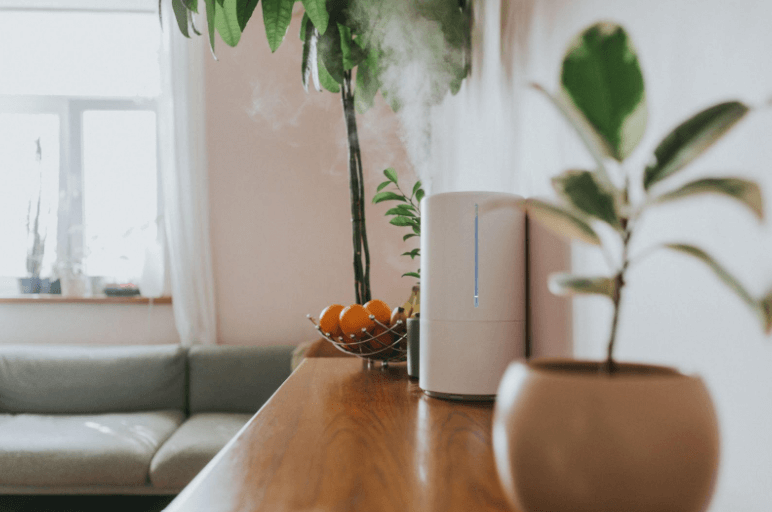
Is Low Humidity in Your Home Bad?
Humidity is an important health variable that is easy to overlook. Ideal humidity is around 35 to 55 percent according to experts. When humidity is higher than that, it can contribute to the growth of mold, dust mites, and fungus, making it particularly dangerous for people with asthma and allergies. Low humidity is equally dangerous, however, and may even lead to serious complications to your health. It can also hurt your house!
In this article, we’ll look at whether low humidity is bad for you and how to normalize the humidity levels in your home.
What is Low Humidity?
Low humidity means that there is a small amount of water vapor in the air, making it feel very dry.
It’s important to understand the different types of humidity, which are absolute humidity, relative humidity, and specific humidity. Each type provides a unique perspective on humidity and its impact on the environment. It’s important to note that absolute humidity refers to the total amount of water vapor present in the atmosphere, regardless of temperature. On the other hand, relative humidity compares the total amount of water vapor in the atmosphere to the maximum amount that can be held at a given temperature.
This measurement is crucial in meteorology, as it communicates how the total amount of water vapor in the air feels, especially when combined with temperature. For example, if it’s 78 degrees with 80% humidity, you need to dress accordingly and use some hairspray to avoid discomfort. Lastly, specific humidity refers to the total amount of water vapor suspended in the air, which is not particularly relevant when measuring humidity levels in your home.
To maintain proper indoor air humidity levels, it’s important to measure the humidity accurately. A hygrometer is an inexpensive and easy-to-find tool that can help you achieve this.
Symptoms of Low Humidity in the House
Low humidity in the house can lead to various symptoms, affecting both your health and the environment within your home. Here are some common symptoms of low humidity:
- Dry skin and lips. Low humidity can cause moisture to evaporate from your skin, leading to dryness, itchiness, and even cracks. Your lips may also become chapped.
- Irritated respiratory tract. Dry air can irritate your nasal passages, throat, and lungs, leading to symptoms such as coughing, sore throat, and congestion.
- Static electricity. When the air is dry, static electricity tends to build up more easily, resulting in static shocks when touching metal objects or other people.
- Dry, itchy eyes. Insufficient moisture in the air can cause your eyes to become dry, itchy, and irritated, especially if you spend a lot of time looking at screens or under artificial lighting.
- Increased susceptibility to illness. Dry air can make it easier for viruses and bacteria to thrive, potentially increasing your risk of respiratory infections and illnesses.
- Cracked wooden furniture and flooring. Low humidity levels can cause wooden furniture and flooring to dry out and crack over time.
- Difficulty sleeping. Dry air can lead to discomfort during sleep, causing you to wake up frequently throughout the night or experience difficulty falling asleep.
- Increased heating bills. Low humidity can make the air feel colder than it is, leading you to turn up the heat more often to compensate, which can result in higher energy bills.

Doctors confirm that low humidity is bad for your health. To alleviate these symptoms, you can use a humidifier to increase indoor humidity levels, especially during the winter months when heating systems tend to dry out the air. Additionally, maintaining proper ventilation and avoiding excessive use of heating systems can help regulate indoor humidity levels.
The Effect of Low Humidity on Your House
It is imperative to note that low humidity can have severe consequences for both our health and our houses. Dry air has the potential to damage wood, meaning that our floors, furniture, or anything else made of wood requires moisture to maintain its integrity.
The problem with dry air is that it tends to pull moisture from the environment, including the wood in our house, which can lead to irreversible damage. The wood may crack, splinter, and shrink, ultimately resulting in expensive repairs or replacements.
Additionally, dry air can cause chipping or peeling paint and wallpaper. It is crucial to maintain proper humidity levels in our homes to prevent such damage.
Fixing Low Humidity in Your House
Increasing the levels of humidity in your home is crucial to maintain your health and protect your house from damage. You can take several measures to achieve this goal, such as leaving the bathroom door open when you shower to let the steam and humidity spread to other areas of the house.

Houseplants are also an excellent way to increase humidity levels, as they release moisture from their leaves and stems, provided that you water them properly and keep them healthy. If you lack gardening skills, don’t worry, you can always ask the greenhouse salesperson for advice on the best plants for you.
Additionally, reducing the heat by just a few degrees can help increase humidity levels and lower your heating bill. By understanding the negative effects of low humidity on your health and house, you can take steps to maintain healthy humidity levels. Buy a hygrometer, which measures the amount of humidity and water in the air, can help you regulate humidity levels and keep them within a healthy range.
By following these tips, you can create a healthy and comfortable living environment for yourself and your loved ones.
Provide quality ventilation and indoor air conditioning. McMillin Air in Arizona can help you do just that.








0 comments